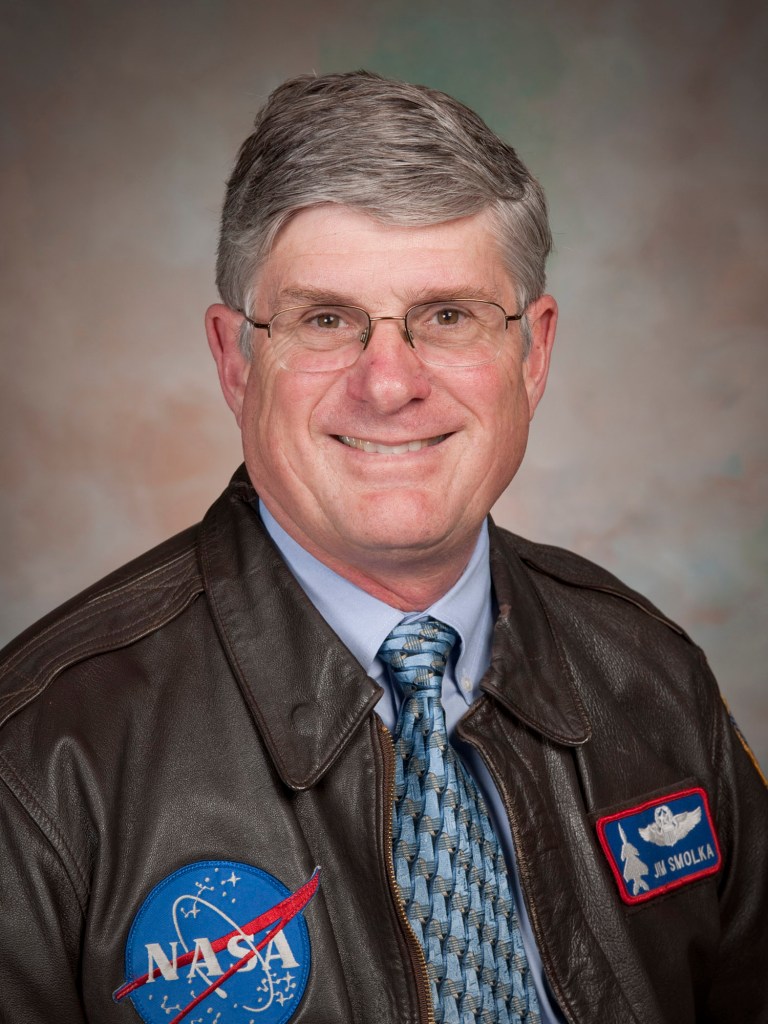
James W. Smolka
Armstrong Director of Safety and Mission Assurance
James W. Smolka was the director of Safety and Mission Assurance at NASA’s Armstrong Flight Research Center in Edwards, California, retiring in 2016. He was responsible for flight and range safety, aviation and institutional safety at Armstrong, including planning, directing and coordinating all activities necessary to ensure that proper safety policies, objectives, processes and standards were established and maintained. He provided independent assessment, risk management and airworthiness oversight that assured the early integration of safety, reliability and quality into programs and facilities.
Smolka also served on Armstrong’s Airworthiness and Flight Safety Review Board, which provides independent assessment of each flight project’s readiness to proceed to flight.
Prior to becoming the director of Safety and Mission Assurance, Smolka was the director of Flight Operations at Armstrong from 2012 to 2015. He was responsible for the center’s fleet of 22 highly modified manned and remotely piloted aircraft flown on worldwide science, astronomy and aeronautical flight research missions, as well as the flight and ground crews that fly and maintain them.
Smolka previously served as the center’s chief engineer, responsible for providing independent technical guidance and oversight to Armstrong flight projects to ensure conformance with center and agency standards, policies and processes, as well as chairing Armstrong’s Airworthiness and Flight Safety Review Board that is responsible for determining and providing the appropriate level of independent technical review for each project prior to flight.
A research pilot at Armstrong since 1985, Smolka flew a variety of research and support aircraft. He was project pilot on the Advanced Control Technology for Integrated Vehicles and Intelligent Flight Control Systems research projects flown on NASA’s now-retired NF-15B research aircraft and the sonic boom reduction project flown on the Gulfstream Aerospace/NASA F-15B Quiet Spike. He was co-project pilot on the F-16XL Supersonic Laminar Flow Control aircraft and the F-18 High Alpha (Angle-of-Attack) Research Vehicle aircraft. He also participated in the F-15 Highly Integrated Digital Electronic Control (HiDEC) flight and engine control system projects, the AFTI/F-16, AFTI/F-111 Mission Adaptive Wing, F‑104 and F-15 Aeronautical Research Aircraft experiments and projects flown on the B-52B mothership, including Pegasus rocket launches, and joint projects flown on a U.S. Air Force C-17A.
Before joining NASA, Smolka was an F-16 experimental test pilot with General Dynamics Corporation for two years at Edwards, including work as a project pilot with the Air Force/NASA Advanced Fighter Technology Integration/F-16 Joint Test Force located at NASA’s Dryden (now Armstrong) Flight Research Center.
Smolka received his Bachelor of Science from the U.S. Air Force Academy in 1972. He is a 1978 graduate of the Air Force Test Pilot School, served on active duty until 1983 and subsequently served in the U.S. Air Force Reserve until 1999. Among the aircraft he flew in the Air Force were the T-38, A-7D, OV-10A, A-37, A-10A and F-15B. Smolka retired from the Air Force Reserve with the rank of colonel in 1999 after 27 years of active and reserve service.
Smolka received a Master of Science in aeronautical and astronautical engineering in 1980 from the Massachusetts Institute of Technology. He also earned an engineer of aeronautics and astronautics degree from Stanford University in 1994. He completed a master’s degree in applied mathematics from the University of Washington in 2011.
Named a Fellow of the Society of Experimental Test Pilots in 2012 for distinction in experimental flight testing, Smolka authored several technical publications and has taught a number of graduate and undergraduate courses in the aerospace field for California State University, Fresno; California State Polytechnic University, Pomona; California State University, Long Beach; and Chapman College. He accumulated more than 9,000 hours of flight time during his 40-year flying career.


























